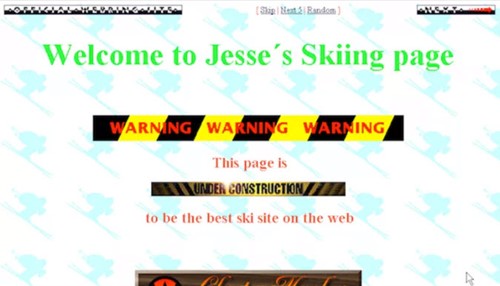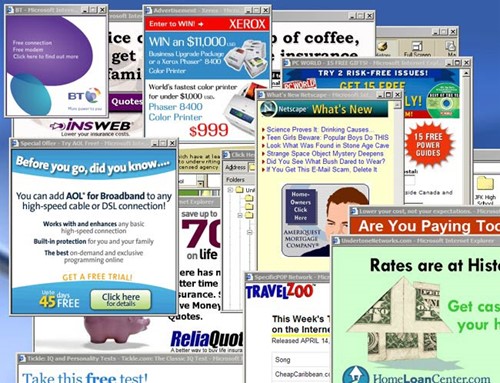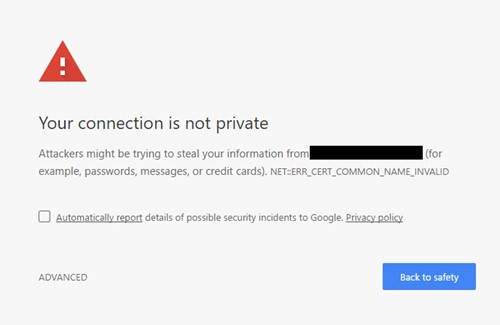
The foundational core to any well structured digital marketing strategy is a brand’s website. It’s where you drive traffic so users can learn more about your business, your products and services, and hopefully take an action like making a purchase or contacting you. You’ve put a lot of money, time, and effort into your website, it’s a living and breathing representation of your business’s values and work, so it’s frustrating when users are leaving your site instead of converting.
While it’s easy to write your website off as failing when users aren’t taking the desired action you want them to take, there are some huge opportunities to turn the tide when it comes to keeping them on site and engaged. Below, we put together the top 9 reasons we see users leaving a website before taking an action. Chances are your answer is below as well.
Out Of Date Website Design
Have you ever encountered a website design or layout that looked like a theme from Geocities? For those of us too young to remember such an experience, here’s an example…

Or have you encountered a website that looks like it hasn’t been refreshed or touched in a couple of years? First impressions are extremely important when it comes to web design, in fact, 94% of first impressions are based on web design (ConversionXL). There’s are multiple psychological elements to consider when it comes to web design, including:
- Colors
- Fonts
- Logos
- Navigation
- Images
- Content
And more. It’s best to take advantage of user testing when assessing your website. Get user feedback about what elements are working and what aren’t. Really pay attention to their words and what they are giving you from an information standpoint - engaging your audience and showing you’re listening is some of the best PR you can get!
Out Of Date And Irrelevant Content
Building on an out of date design, the same applies for content. Not only is content that’s irrelevant or uninformative for users frustrating in and of itself, but it can also do a lot of damage from a Search Engine Optimization standpoint. For instance, if users click through to your site from search engines and click back to the search results, search engines can see that the content was irrelevant to their search and rank you accordingly in the future.
Users love what’s called “fresh content”, new and exciting content that provides real value and does not waste their time. When you're giving your audience insightful content that’s up to date and keep them in the industry loop, it builds brand awareness and loyalty. Who wants to read or listen to a brand with content from 2012? No one, this includes your website’s visitors.
Slow Page Loading
Did you know a 1 second delay in a website’s load time results in a 7% reduction in conversion rate? And that 73% of mobile internet users say that they’ve encountered a website that was too slow to load? (both from Kissmetrics) In 2010, Google made page speed a ranking factor, meaning when ranking a website, they take into consideration how long it takes for your web page to render. The slower the load time, the lower the ranking potentially.
This is especially important for mobile usability, which Google also recently made a ranking factor. More people are browsing on mobile devices than desktop, and it’s important that you’re using a fast, responsive website design so that you’re quick load times on desktop transition well to mobile.
Bad Or Confusing Navigation
Besides the content on a page and how quickly a page loads, the most important element from a user experience standpoint could be your website’s navigation. Think of your website’s navigation or menu as a roadmap for your users. If they can’t find what they are looking for, or your navigation is disorganized or overwhelming, they’re going to leave your website and go elsewhere to find what they are looking for.
What makes a good navigation?
- A distinct design
- Simplicity in layout
- Organized and structured
- Accessible
- Consistent across the site
- Compact or condensed
Remember, customers and visitors are just trying to find the information they want and need quickly. If you provide too many twists and turns for them to find what they are looking for when using your navigation, it creates frustration. Remove the element of frustration and create a navigational experience that’s helpful and not hindering.
Too Many Damn Ads Or Pop-Ups
How do you feel when you encounter a website that does this?

I get cagey and almost have a mild panic attack. A popup, when done incorrectly or not of value to the viewer, can give the feeling of someone aggressively 2 inches from your face. When you’re running multiple pop-ups or ads, extrapolate that feeling. Users don’t want to feel hounded by pop-ups or irrelevant offers. They want value and they want to be targeted properly in how they are offered that value. If you’re using too many ads or pop-ups, consider removing them until you have a well thought out strategy to do so in place.
No Clear Calls To Action
While customers don’t like to be pushed or cornered, they do like to have guidance in what the next steps should be. What I mean by this is that users want to have buttons, forms, or links clearly in their field of view that tell them “This is where you go next”. Without calls to action that are placed properly or clearly marked, your users don’t know to take that next step and can leave the page out of frustration or not knowing where to look. This is a huge opportunity for brands to take advantage of, so definitely be sure to check this point!
Your Checkout Process Or Forms Are Tedious
There is nothing worse than a long, drawn out check out or form process when all you want to do is take action and get the hell on with your day. When a conversion process contains:
- An intrusive “sign in” barrier
- 40 form fields
- Multiple pages to checkout
- Broken fields or buttons
It can be overbearing and not worth the customer’s while. When you develop or look at your checkout process, think of the user’s time and effort. Are you asking too much? Are you making the process too long and overbearing? What do competitor forms / checkout process look like?
Be sure to also solicit feedback from those making it through the process to enhance the experience, or survey those who tried to click out before finishing why they aren’t moving forward with their purchase. The information you receive will be very telling.
No Credibility Or Testimonials
Customers and potential customers want to know that the products or services you are providing are the best for their needs. Nothing says “trust” like testimonials from customers about how your product or service met or exceeded their needs, and nothing says “authority” like certifications from industry leaders.
The keys to using testimonials or certifications?
- Make sure they’re relevant
- Make sure they’re visible
- Make sure they’re real
- Make sure you have permission from customers
- Make sure you use them beyond on your website
Testimonials and certifications are there for a reason: to show you’re doing your job as a brand right. If you have them, use them, and if you don’t, make sure you start taking action to obtain them!
Your Site Isn't Safe Or Secure
Whenever I see the screenshot below, I instantly leave the site…

Those accessing your website want to make sure that they are in good hands and that the information they are potentially sharing is safe with you. When a website is nonsecure, or worse hacked, it gives the user the feeling of carelessness. It’s important that you alleviate these issues before they start by making sure that:
- Your site is secure (https is a ranking factor)
- You have a privacy policy
- You have a security policy
- You have a way to be contacted if issues arise
Having these pieces of information will give your customers and users greater peace of mind in knowing their information is safe. Take the proper steps to show them you care and acting in their information's best interest. They'll appreciate the gesture.
If none of the above reasons apply to why your users are leaving your website and / or you don't know where to begin, the digital marketing experts at Marcel Digital are standing by and ready to help in any way that they can. From Google Analytics implementations to Web Development, Search Engine Optimization to Conversion Rate Optimization, we'll take a look and help get your website on the right track to start increasing user engagement. All it takes is reaching out and let us do the rest!
Web Development
About the author
Tom Kelly
Tom has worked in digital marketing since he started his career over a decade ago, working across the project and account side of the business.